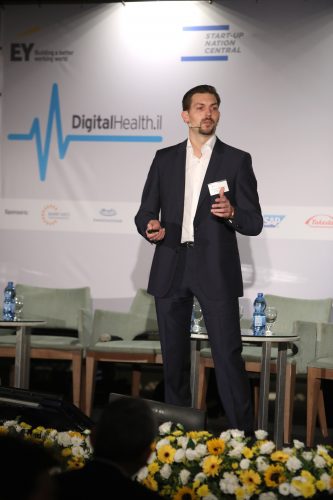This is what Dr. Kai Saperling, product manager of precision medicine at SAP global company, says in a lecture at the Digital Health conference in Tel Aviv. According to him, today about a thousand people die a day - like two jumbo planes that crash - because of medical negligence resulting from a lack of communication between different doctors and between doctors and other departments

"The patient is at the center and therefore the consolidation of information about the patient is what makes the medical network possible. An effective medical network could prevent hundreds of deaths a day caused by medical errors that could have been easily prevented if the information had been distributed to the entire system in a uniform manner."
This is what Dr. Kai Safferling, (Dr. Kai Safferling) product manager of precision medicine at SAP global company says in a lecture at the Digital Health Conference of EY Israel in collaboration with SNC (start up nation central) and IATI the Israeli Association for Advanced Technologies which was held this year for the third time, and focused on the importance of integrating digital health solutions for all players in the health system - insurance companies, pharmaceutical companies and hospitals, the opportunities that exist for companies in the field in developing markets alongside lectures in the field of behavioral health and big data, which are emerging as trends in the field of health.
"SAP customers produce 82% of all medical equipment in the world and over 7,900 healthcare providers in 88 countries including Israel are customers of SAP's new strategic department: SAP Connected Health." says Sparling.
According to him, the importance is especially great now because the world's population is expected to grow and reach about 9 billion people in 2050. Two billion of them will then be over the age of 60. Already today, 73% of deaths are caused by chronic diseases.
According to Sperling, the main obstacles to the adoption of digital medicine are issues of information privacy and access to anonymous data in a secure environment - for example, it would be possible to prevent a situation in which a doctor would know details about patients treated by other doctors but would have access to the anonymous information of the other doctor's patients so that he could use them to locate the illness of the patient in front of him.
"For this purpose, compliance with regulatory guidelines is necessary, when very few applications meet the needs of the patient's own information control. The algorithms should not be a black box. Transparent collaboration in patient data between the various departments (emergency room, inpatient department, imaging, laboratory, etc.). Involvement of the patient will also help to focus and sift out wrong aspects."
"Sperling quotes Eric Topol, who wrote in his book "The Patient Will See You Now": "Healthcare is now in a Gutenberg moment - compared to the printing revolution before which only the rich and church people had access to knowledge and after it - everyone."
"Each patient now produces rivers of data that, if collected together, can draw a detailed picture of the patient's health status, and when collected together with data from other patients, they can become a deep repository of knowledge about various medical conditions and patient populations."
Sperling provided two examples: one of the largest users of the system is the American Society of Clinical Oncology (American Society of Clinical Oncology) as a clinical decision support system for over 40 thousand cancer patients to improve the results of medical treatment. They use a real-time big data analysis platform to match patient information from different records. The activity will continue to add to the system the functionality needed by one million patients in sixty different cancers. The system allows oncologists to learn and collaborate and get sometimes surprising insights.
Stanford University is using the system together with SAP to discover links between genetics in health and disease through rapid analysis of work on single nucleotide polymorphisms in ALDH2 disease. Population analysis combined with the genetic data of 2,504 patients. This is 2.1 terabytes of data, 212 million rows of data of all patients. The response time of the system is 2.5 seconds.
The solution includes specific healthcare analytics, data injection, a coordinated clinical data model and a genomic layer, data replication, natural language processing ontologies and dictionaries, and access management. Analytics, visualization and interpretation will explore cycles, create hypotheses and quickly test them, compare individual patients, identify genetic markers. The system is supported by text mining, NLP, real-time ontologies, and in-memory analytics.
"The system also uses the knowledge of the patient himself and supports many scenarios in the field of health and life sciences, including collaborations between patients/consumers, doctors and researchers, the mobility of the process and a complementary cloud service."
In conclusion, Sperling says: "The patient is at the center of attention, it is the pooling of information that will allow the establishment of the medical network."
In response to the question of the science website, Sperling explained that SAP will not keep the data, but will only provide the platform that will allow the healthcare providers to handle the patient data, and this for reasons of maintaining privacy.
